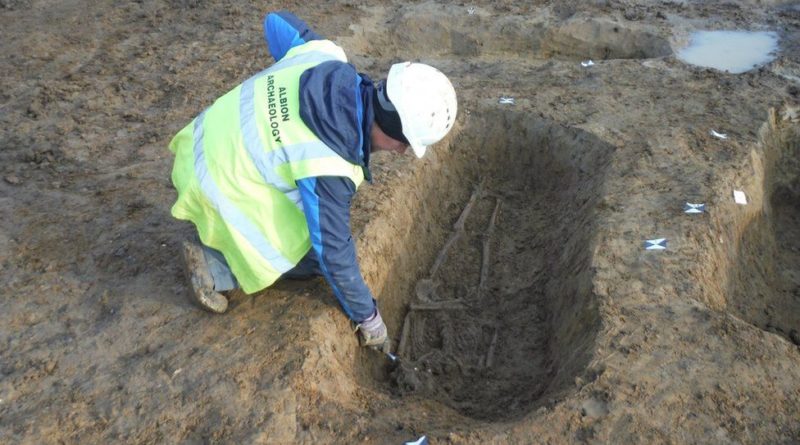First example of Roman crucifixion in UK found in Cambridgeshire
Archaeologists have discovered the earliest evidence of a Roman crucifixion in the United Kingdom in a small Cambridgeshire village.
In Fenstanton, a man’s skeleton was discovered with a nail through his heel.
Corinne Duhig, a bone specialist at Cambridge University, described the discovery as “absolutely exceptional” for a previously undiscovered Roman settlement.
She claimed it demonstrated that “inhabitants… could not escape Rome’s most barbarous punishment” even here.
Albion Archaeology, based in Bedford, discovered the hamlet in 2017 while excavating ground for a planned housing development.
They discovered five small cemeteries with 40 people and five children, some of whom were from the same families.
The graves were built between the third and fourth centuries AD, according to archaeologists.
A skeleton of a man with a nail through his right heel bone was uncovered in one tomb.
Other injuries were discovered, indicating that the man had been hurt before he died, and his legs showed evidence of infection or inflammation, maybe caused by a systemic disorder or being chained or shackled.
“These graves and the settlement that grew along the Roman road at Fenstanton are breaking new ground in archaeological research,” said archaeologist Kasia Gdaniec, speaking on behalf of Cambridgeshire County Council’s historic environment team.
Ms Duhig, an osteologist (bone specialist) from the university’s Wolfson College, said: “The lucky combination of good preservation and the nail being left in the bone has allowed me to examine this almost unique example when so many thousands have been lost.
“This shows that the inhabitants of even this small settlement at the edge of empire could not avoid Rome’s most barbaric punishment.”
Ms Duhig’s research into crucifixion evidence from this period around the world turned up only three other possible examples, according to the council: one from La Larda in Gavello, Italy, one from Mendes in Egypt, and one from a burial discovered in Giv’at ha-Mivtar in north Jerusalem during construction work in 1968.
Only the Jerusalem sample was found to be a likely crucifixion, as the right heel bone still had a nail in the same position as the Fenstanton burial.
The county council stated that it was customary to remove any nails used in the crucifixion for re-use or disposal, but the nail in the Fenstanton case had bent and gotten set in the bone.
Several other objects were discovered during the excavation, including enamelled brooches, coins, decorative ceramics, and animal bones.
large building and a formal yard or road surfaces indicated the presence of an organised Roman settlement with signs of trade and wealth, the council said.
It said it hoped to be able to display the finds eventually.
Fenstanton’s High Street follows the route of the Via Devana, a road which linked the Roman towns of Cambridge and Godmanchester.




